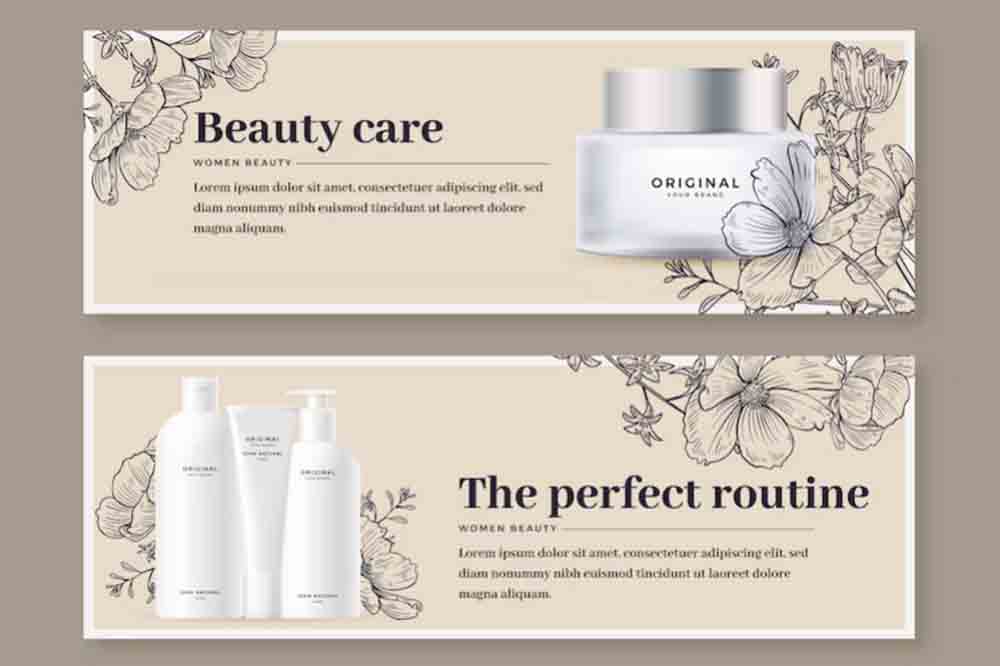Navigating Cosmetics Label Requirements
The world of cosmetics is vast and ever-changing, with new products and trends emerging every day. As a cosmetics brand, it’s crucial to stay ahead of the curve and ensure that your products are compliant with the latest regulations and requirements. One of the most critical aspects of compliance is understanding and adhering to cosmetics label requirements.
Cosmetics label requirements encompass a range of information that must include on your product’s packaging, such as ingredients, directions for use, and safety warnings. These requirements are to protect consumers and ensure that they have access to accurate and transparent information about the products they use.
In this comprehensive guide, we’ll delve into the intricacies of cosmetics label requirements, exploring the importance of understanding these regulations for both private label and no label cosmetics. We’ll also discuss the key components of labeling for cosmetic products, FDA regulations, international requirements, label claims and certifications, and best practices for designing compliant cosmetics labels. Finally, we’ll cover common mistakes to avoid and resources for further guidance.
Importance of understanding label requirements for cosmetic brands
Staying informed about cosmetics label requirements is not just a legal obligation for cosmetic brands, but it’s also essential for maintaining consumer trust and brand reputation. A well-designed and compliant label demonstrates your commitment to providing high-quality and safe products to your customers.
In addition to protecting your customers, understanding and adhering to label requirements can also help you avoid costly fines, product recalls, and legal disputes. By staying compliant, you can focus on growing your brand and expanding your product offerings without the risk of regulatory penalties.
Furthermore, understanding cosmetics label requirements can also inform your marketing and product development strategies. By knowing what claims and certifications are permissible, you can develop products that appeal to your target audience while remaining compliant with regulations.
Private label vs. no label cosmetics
When it comes to cosmetics label requirements, it’s important to differentiate between private label and no label cosmetics. Private label cosmetics are products manufactured by a third party but sold under your brand name. In this case, you are responsible for ensuring that the products comply with all labeling requirements.
No label cosmetics, also known as white label or blank label cosmetics, are products that are sold without any branding or labeling. These products are typically purchased by businesses that wish to apply their branding and labels before selling the products to consumers. In this scenario, the responsibility for adhering to cosmetics label requirements falls on the company that applies the labels and sells the products.
Regardless of whether you’re dealing with private label or no label cosmetics, understanding and adhering to cosmetics label requirements is essential for protecting your customers and your brand.
Key components of labeling for cosmetic products
There are several key components that must be included on cosmetics labels to comply with regulations. These components may vary depending on your location and the specific type of cosmetic product, but generally include:
- Product name and description: This should clearly identify the product and its intended use.
- Net contents: The amount of product in the container, usually expressed in weight or volume.
- Ingredients: A complete list of ingredients in descending order of predominance. This list should include both the common name and the International Nomenclature of Cosmetic Ingredients (INCI) name for each ingredient.
- Warnings and precautions: Any necessary warnings or precautions for safe use, such as avoiding contact with eyes or not ingesting the product.
- Directions for use: Instructions on how to use the product correctly, including any special application techniques or storage requirements.
- Manufacturer or distributor information: The name, address, and contact information for the company responsible for the product.
- Expiration date or period-after-opening symbol: Indicates when the product should no longer be used.
By including these key components on your cosmetics labels, you can ensure that your products are compliant with regulations and provide essential information to your customers.
FDA regulations for cosmetics labels
In the United States, cosmetics labels are regulated by the Food and Drug Administration (FDA) under the Federal Food, Drug, and Cosmetic Act (FD&C Act). The FDA has established specific requirements for cosmetics labels, which can be broken down into two main categories: identity labeling and information labeling.
Identity labeling refers to the product name and description, which must be prominently displayed on the principal display panel (PDP) of the package. This is the part of the package that is most likely to be seen by the consumer when the product is displayed for sale.
Information labeling encompasses the remaining components we discussed in the previous section, such as ingredients, warnings, and directions for use. These must be included on an information panel, which is typically located on the side or back of the package.
It’s important to note that the FDA does not pre-approve cosmetics labels before products are brought to market. Instead, they rely on companies to ensure that their labels are compliant with regulations. If the FDA determines that a label is non-compliant, they can take enforcement action, such as issuing a warning letter or requesting a product recall.
International cosmetics label requirements
If you’re planning to sell your cosmetics products internationally, you’ll need to be aware of the specific label requirements for each country or region where your products will be sold. Some of the key international regulations include:
- European Union (EU): The EU has stringent cosmetics label requirements, which are outlined in the EU Cosmetics Regulation (EC) No 1223/2009. These requirements are similar to the FDA’s regulations, but also include additional components, such as the need for a European address and a batch code.
- Canada: Cosmetics labels in Canada must comply with the Cosmetic Regulations under the Food and Drugs Act. These requirements include bilingual labeling (English and French) and specific formatting for ingredients lists.
- Australia: The Australian Competition and Consumer Commission (ACCC) regulates cosmetics labels under the Australian Consumer Law. The requirements include mandatory ingredients lists and specific warnings for certain types of products, such as sunscreens and aerosols.
To ensure that your cosmetics labels are compliant with international requirements, it’s essential to research the regulations for each country or region and consult with legal experts or regulatory consultants if necessary.
Navigating label claims and certifications
In addition to the required components, cosmetics brands may also choose to include various claims and certifications on their labels to appeal to consumers. These can include claims about product performance, such as “long-lasting” or “smudge-proof,” as well as certifications related to ethical or environmental practices, such as “cruelty-free” or “organic.”
When including these claims and certifications on your cosmetics labels, it’s essential to ensure that they are accurate and supported by evidence. Misleading or unsubstantiated claims can result in regulatory action, as well as potential damage to your brand’s reputation.
It’s also crucial to be aware of any specific requirements or guidelines related to these claims and certifications. For example, the FDA has guidelines on the use of terms like “natural” and “hypoallergenic,” while organizations like Leaping Bunny and ECOCERT have specific requirements for obtaining and displaying their certifications.
Best practices for designing compliant cosmetics labels
When designing cosmetics labels, it’s essential to strike a balance between aesthetics and compliance. To ensure that your labels are both visually appealing and compliant with regulations, consider the following best practices:
- Prioritize readability: Use clear, legible fonts and sufficient contrast between text and background colors to ensure that all required information is easy to read.
- Organize information logically: Group related information together and use headings or other design elements to make it easy for consumers to find the information they’re looking for.
- Use symbols and icons wisely: Symbols and icons can help convey information more efficiently, but be sure to use them in conjunction with text to ensure clarity and compliance with regulations.
- Stay up-to-date on regulations: Regularly review cosmetics label requirements and stay informed about any changes or updates to ensure ongoing compliance.
- Consult with experts: Work with legal experts, regulatory consultants, or professional label designers to ensure that your labels are compliant with all relevant requirements.
Common mistakes to avoid in cosmetics labeling
To help you navigate the complexities of cosmetics label requirements, here are some common mistakes to avoid:
- Omitting required information: Ensure that you include all of the necessary components on your cosmetics labels, such as ingredients, warnings, and directions for use.
- Using misleading or unsupported claims: Be cautious when making claims about your products and ensure that they are accurate and backed by evidence.
- Ignoring international requirements: If you’re planning to sell your products internationally, be sure to research and adhere to the specific label requirements for each country or region.
- Inadequate proofreading: Carefully proofread your labels for errors, inconsistencies, and omissions, as these can lead to regulatory action and damage your brand’s reputation.
- Neglecting label design: While compliance is crucial, don’t forget about the aesthetics of your labels. A well-designed label can enhance your brand image and attract customers.
Conclusion and resources for further guidance
Navigating cosmetics label requirements can be a complex and challenging task, but it’s an essential aspect of ensuring your products are safe, high-quality, and compliant with regulations. By understanding the key components of labeling for cosmetic products, staying informed about FDA and international requirements, and following best practices for label design, you can protect your customers and your brand.
If you need further guidance or assistance with cosmetics label requirements, consider consulting with legal experts, regulatory consultants, or professional label designers. Additionally, resources such as the FDA’s website and guidance documents, international regulatory agencies, and industry associations can provide valuable information and support.
Remember, staying informed and proactive about cosmetics label requirements is not just a legal obligation, but also a crucial aspect of building trust with your customers and ensuring the success of your cosmetics brand.
Read More of Cosmetic Business Articles:
the Most Profitable Cosmetic Products
How much does it cost to start a makeup line?
Creative and Profitable Beauty Business Ideas
How to Brand Your Own Cosmetics?



